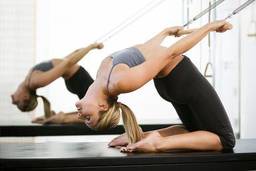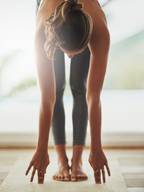Pilates
Pilates is a system of exercise developed by Joseph Pilates in the early 20th century, aimed at improving strength, flexibility, posture, and overall body awareness.

Pilates
Pilates is a system of exercise developed by Joseph Pilates in the early 20th century, aimed at improving strength, flexibility, posture, and overall body awareness. In South Africa, Pilates has become increasingly popular for its emphasis on core strength, stability, and mind-body connection.
Principles of Pilates:
- Core Engagement: Pilates exercises focus on strengthening the core muscles of the abdomen, lower back, and pelvis to provide stability and support for the spine and improve posture.
- Alignment and Precision: Pilates emphasizes proper alignment, posture, and precise movement patterns to ensure safe and effective exercise execution.
- Breath Control: Practitioners are encouraged to coordinate movement with breath, using controlled breathing patterns to enhance concentration, relaxation, and flow.
- Fluidity and Control: Pilates exercises are performed with fluidity, control, and mindfulness, emphasizing quality of movement over quantity and speed.
- Whole-Body Integration: Pilates promotes whole-body integration, encouraging practitioners to engage multiple muscle groups simultaneously and move with efficiency and grace.
Benefits of Pilates:
- Improved Core Strength: Pilates strengthens the deep core muscles, including the abdominals, obliques, and pelvic floor, which are essential for stability, balance, and posture.
- Increased Flexibility: Pilates exercises lengthen and stretch the muscles, joints, and connective tissues, improving flexibility, range of motion, and joint mobility.
- Better Posture: Pilates helps correct postural imbalances and alignment issues, reducing the risk of back pain, neck pain, and other musculoskeletal problems.
- Enhanced Body Awareness: Pilates promotes body awareness, proprioception, and spatial orientation, helping practitioners develop a deeper understanding of their bodies and movement patterns.
- Mind-Body Connection: Pilates fosters a strong mind-body connection, encouraging mental focus, concentration, and mindfulness during exercise, leading to increased relaxation and stress reduction.
Considerations for Practitioners:
- Instructor Qualifications: When choosing a Pilates instructor or studio, practitioners should look for certified teachers with training and experience in Pilates instruction.
- Individualized Instruction: Pilates exercises can be modified and adapted to accommodate individual needs, abilities, and limitations, making it suitable for people of all ages and fitness levels.
- Consistency and Progression: Like any form of exercise, consistency and progression are key to achieving results with Pilates. Practitioners are encouraged to commit to regular practice and gradually increase the intensity and complexity of their workouts over time.
- Mindful Practice: Pilates is not just a physical workout but also a mental and emotional practice. Practitioners are encouraged to approach their workouts with mindfulness, presence, and intention, focusing on the quality of movement and connection with breath.
Available Options in South Africa:
- Pilates Studios: Many Pilates studios in South Africa offer a variety of classes and programs, including mat Pilates, equipment-based Pilates (such as the Reformer, Cadillac, and Chair), and specialized workshops or sessions for specific populations or conditions.
- Fitness Centers: Some fitness centers and gyms in South Africa have Pilates studios or offer Pilates classes as part of their group fitness offerings, providing opportunities for participants to incorporate Pilates into their workout routines.
- Online Resources: There are also online platforms and resources available that offer virtual Pilates classes, tutorials, and workouts, allowing practitioners to practice Pilates from the comfort of their own homes or while traveling.
Overall, Pilates offers a holistic approach to fitness and well-being, focusing on core strength, flexibility, posture, and mindfulness, empowering practitioners to achieve greater physical, mental, and emotional balance and vitality.

